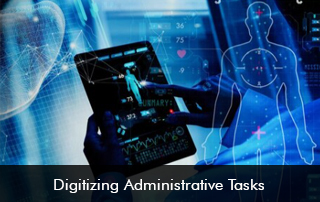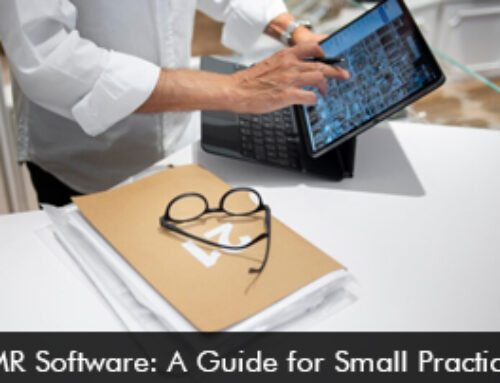As a healthcare professional you are inclined toward taking care of patients and not focusing on administrative tasks. Unfortunately, operational errands and responsibilities can lead to physician burnout and increased stress levels. According to a survey, 40% of employees waste an hour-plus every day on administrative tasks. Daily administrative tasks also overwhelm staff members leading to additional pressure which can impact job performance levels. What can be done about these cumbersome tasks? Practices need to take quick responses by automating and digitizing daily workflow processes to combat the issue of stress levels in the healthcare organization for a happy and fulfilling work environment.
The COVID-19 pandemic has accelerated the use of digital tools to provide services to patients which were traditionally done through one on one interactions. Hospital management has realized that embracing technology for automation will streamline administrative and clinical tasks which will allow staff members to focus on other important activities.
Benefits of digitizing administrative tasks
- Cost savings can be realized.
- Eliminates the chances of human error.
- Ensuring that deadlines are met due to automation.
- Freeing up staff time so they can do other tasks if required.
- Consistency in delivery can keep patient satisfaction scores high.
3 Operations to Digitize in your Practice
Healthcare organizations can consider the following daily administrative tasks to be automated through healthcare technology for workflow optimization and to keep staff burdens at bay.
- Patient Check-In Process – By automating the patient check-in process through robust check-in apps patients can easily check in before their appointment which saves time at the doctor’s office. Patient kiosk (EMR) Software also reduces patient wait times and staff members need not scan paper forms into the Electronic Medical Records (EMR) software system, this way staff can concentrate on other tasks to further improve their services. The check-in process is streamlined and also leads to an increase in return on investment. It is advised that the practice selects a user-friendly and intuitive application with easy navigation and instructions for patients to use with confidence. It is also advised to make the automatic patient check-in process more personal by making a staff member greet them and take them to the kiosk. Members should be near to assist patients who need guidance with the kiosk.
- Patient and Provider Communication – Most patients don’t like calling and waiting on the phone to book an appointment or request a prescription refill. Practices should embrace the Patient-Portal EMR Software platform which links patients to providers round the clock through the facility of prompt two-way messaging. This frees up front desk staff time and messages can be sent easily to patients regarding any important notices. Personal birthday messages can be also sent to the patients easily. The HIPAA-compliant platform offers security and protection and patients feel comfortable sharing their confidential health information. This way the medical assistant doesn’t need to focus on faxes but on their usual duties which keep burdens at a minimum. Staff can work more efficiently and are satisfied to meet their daily work goals.
- Physician Documentation – Clinical documentation is one of the major reasons which can lead to physician burnout. To streamline the documentation process and decrease documentation time speech recognition tools in the robust EHR software system can be used. These speech recognition tools are highly accurate and also allow the provider to give undivided attention to the patient during an encounter which can improve health outcome levels. Some EMR software also leverages Artificial Intelligence (AI) technology which converts patient and provider discussions into clinical notes to be positioned in the Electronic Health Records (EHR) Software system.
Moving Ahead
By making these changes in your practice through embracing technology and healthcare software solutions practices will experience a boost in productivity levels which can, in turn, stimulate growth and profits. Digitizing admin tasks can make a big difference in efficiency levels as everyone working in the practice is focused on offering better care services.






